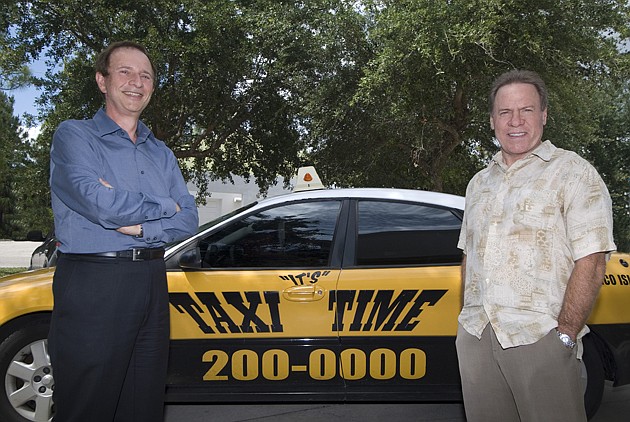- April 5, 2025
-
-
Loading

Loading

Barron Collier, the namesake of Collier County, made his fortune festooning advertising on the side of streetcars.
That connection isn't lost on a group of Collier County entrepreneurs who aim to advertise on the last bit of blank taxicab real estate: the wheels.
The market is huge. There are 23,000 taxis in New York City alone.
The technology behind the idea called Billboard Wheels is proprietary, but the way it works is a mechanic installs a hard plastic hubcap to each taxi wheel. Inside the cover is a light that's powered by energy from the spinning wheel, and it lights up a sign promoting an advertiser. But the magic of it is this: Although the wheel turns, the interchangeable translucent vinyl sign doesn't spin and stays level so people can read it.
This little technological marvel took five years to develop, mostly in Naples engineer William Brown's spare time, says Bruce Sonneborn, the CEO of Street Media.
Dan Brunell is the chairman of Vistage in Naples, a group of CEOs who gather to exchange ideas. Brunell, who also is the former CEO of auto supplier Noble International in Michigan, has seen a lot of business plans but was struck by the simplicity of the device. He says when he viewed a demonstration video of the product it was a slap-your-forehead kind of realization (you can view it on the company's website, streetmediapartners.com).
Brunell became the company's chief financial officer, bringing his knowledge of the auto industry to a group of executives backing the venture. These include Thomas Threlkeld, the CEO of Nassau Pools, and retired entertainment industry executive and Naples resident Tom Mooney. Sonneborn is a timeshare developer who suffered financially during the real estate downturn and moved to Asia before returning to Naples to head up Street Media.
The company keeps a low profile for now. Street Media's offices are in cramped space behind a paint store off Immokalee Road. But it has hired New York City public relations firm Rubenstein Public Relations to launch a marketing blitz this summer.
Sonneborn estimates the company has spent close to $1 million on research and development, including patenting the technology. In addition, every municipality has different rules on mobile advertising. Sonneborn says 31 major municipalities have already approved the concept.
The maintenance department of the taxicab companies can change the advertising logos on the wheels in 20 minutes. It costs about $300 to $400 to install these special wheel covers on each car, and Street Media and cab owners split the advertising revenue.
Sonneborn declines to cite specific advertising rates, but he says signs on top of taxis today can command $200 to $700 a month. He says Street Media could do as much business as the companies that sell advertising on cab tops.
The trick now is to get agencies that buy advertising for large corporations and taxicab owners to buy into the idea. “This is an international product,” Brunell says. “We're not stopping at the borders.”